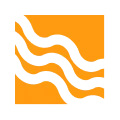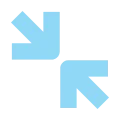Instructions

Authors Instruction:
Manuscripts are received with the understanding that they contain original data that are not previously published or are being considered for publication elsewhere. Authors are required to submit the manuscript along with all concerned certificates and documents copyright form, submission form, corresponding author form, contribution form available on the web site www.jojs.in of the journal. In case of any queries or additional information, you can write an e-mail to the Editor-in-Chief of the journal at svcortho@gmail.com.
The manuscript must have separate documents for:
- Cover letter
- Research Article/Case Review/Original Research/Review Article file
- Figure/Table/Graph/Flowchart (with descriptive legends) doc.
Manuscript Components
Microsoft Word 97-2013 or higher document file must be used to submit a manuscript. The text must be double spaced with 1″ margins and justified to the left-hand margin. Avoid using “styles” or document templates. The “Normal” Word format is recommended. (Arial 12-point text is preferred.) Please number all pages.
1. TITLE
Cover Letter

Title Page
Name and affiliation:
Corresponding Address
Author Names
Abstract
All articles must include a structured abstract of approximately 200 to 300 words and only include material appearing in the main body of the manuscript. Authors are required to indicate the relevance in a statement of clinical significance within the abstract of the manuscript as well as at the end of the main body of the text.
Structured abstracts vary according to the type of article. All abstracts must be organized into a structured format appropriate to the type of article using the headings listed in the following table:
|
Primary Research
|
Literature Reviews
|
Case Reports
|
Clinical Techniques
|
|---|---|---|---|
|
Aim
|
Aim
|
Aim
|
Aim
|
|
Materials & Methods
|
Background
|
Background
|
Background
|
|
Results
|
Review Results.
|
Case Description
|
Technique
|
|
Conclusion
|
Conclusion
|
Conclusion
|
Conclusion
|
|
Clinical Significance
|
Clinical Significance
|
Clinical Significance
|
Clinical Significance
|
Keywords
A list of three to ten keywords contained in the article must be listed below the abstract. A minimum of three and maximum ten keywords are required, and they should contain the type of research such as systematic review, randomized clinical trial, cohort study, case-control study, laboratory research, or “other”. (These will be used to search for your article on PubMed and other Internet resources.) (During the electronic submission process authors will be asked to copy and paste the abstract and the keywords into corresponding text boxes on the submissions pages.)
2. BODY OF THE MANUSCRIPT
The body of the manuscript must be organized into a format appropriate for the type of article using bold headings as listed in the following table:
|
Primary Research
|
Literature Reviews
|
Case Reports
|
Clinical Techniques
|
|---|---|---|---|
|
Introduction
|
Background
|
Background
|
Background
|
|
Materials & Methods
|
Review Results
|
Case Description
|
Technique
|
|
Results
|
Discussion
|
Discussion
|
Discussion
|
|
Discussion
|
Conclusion
|
Conclusion
|
Conclusion
|
|
Conclusions
|
Clinical Significance
|
Clinical Significance
|
Clinical Significance
|
|
Clinical Significance
|
Acknowledgment
|
Acknowledgment
|
Acknowledgment
|
|
References
|
References
|
References
|
References
|
Introduction
This should clearly state the purpose of the study and identify what issues are going to be addressed.
Material and Methods
This section should carefully describe the selection of the observational or experimental subjects (human or nonhuman) and methods and materials used, including sample size and statistical approaches. Commonly used techniques or methods should be referred to appropriate references and should be described in brief. However, unique experiments, methods, technique should be described in adequate detail to allow other workers to reproduce the results.
For studies involving living subjects, please see section, below, on Ethical and Humane Considerations and the information regarding mandatory clinical trial registration.
Ethical and Humane Considerations
All relevant attributes of the material forming the subject of the research should be provided. Experimental methodology should be concisely and appropriately explained. Commercially produced materials, devices, software, etc. must be followed by name of manufacturer and location. Statistical methods should be clearly specified. Manuscripts reporting human studies should include evidence that study was ethically conducted in accordance with Declaration of Helsinki*.
* A statement of ethical principles for medical research involving human subjects, including research on identifiable human material and data.
Results
This section should succinctly state the results without any lengthy discussion or interpretation of individual data. Data should be presented using tables, illustrations and graphs. Data in table or illustration form should be referenced in the text, not repeated (e.g. detailed information should not be given in text and tables). Statistical tests should be clearly defined and statistical significance should be shown in both figures and tables with the help of superscripts such as a, b, c, rather than *, ¶, # or other nonsequential symbols.
Discussion
The discussion should focus on the new and important findings of the study. The observations should be related to other relevant studies in a logical sequence. It should summarize, but not repeat the Results. The Discussion should end with a summary of the data and conclusions. The conclusions should be linked with the aims and objectives of the study and should clearly state whether the objective was achieved. Limitations of the study should also be mentioned.

Acknowledgments
Acknowledgment of the source of any funding for the research associated with the article should be listed here along with a statement that the research was approved by an appropriate human subject’s research committee when appropriate. An additional acknowledgement of support provided by other individuals, organizations, institutions is left to the discretion of the author.
Conclusion
In academic writing, a well-crafted conclusion can provide the final word on the value of your analysis, research, or paper.
3. REFERENCES
Bibliography should list references in order of their appearance in the text (not alphabetically) and should follow PubMed Central guidelines along with Vancouver Style. Visit the National Center for Biotechnology Information (NCBI) website http://www.ncbi.nlm.nih.gov/pmc/pmcdoc/tagging-guidelines/article/style.html and search for specific reference citations under the section “Fully-Tagged Citations”. Point 2.3 needs to be followed. All references must be cited in the text in superscript. The examples of the references have been mentioned below:

Journal
- Le Huec JC, Jouve JL, Szpalski M. Surgical techniques in pediatric spine surgery. Eur Spine J 2014 May 9. [Epub ahead of print].
- Lucas KR, Polus BI, Rich PS. Latent myofacial trigger points: their effect on muscle activation and movement efficiency. J Bodywork movement Ther 2004;8(3):160-166.
- Miladi L, Mousny M. A novel technique for treatment of progressive scoliosis in young children using a 3-hook and 2-screw construct (H3S2) on a single sub-muscular growing rod: surgical technique. Eur Spine J 2014 May 9. [Epub ahead of print].
- Falla D, Jull G, Hodges PW. Feedforward activity of the cervical flexor muscles during voluntary arm movements is delayed in chronic neck pain. Exp Brain Res 2004;157(1):43-48.
Abstract
Hoyme HE, Jones KL, Dixon SD, Jewett T, Hanson JW, Robinson LK, Small ME, Allanson J. Maternal cocain use and fetal vascular disruption [abstract]. Am J Hum Genet 1988;43(3 Suppl):A56.
Authored Book
Ohlsen, Merle M.; Horne, Arthur M.; Lowe, Charles F. Group counseling. New York: Holt, Rinehart, and Winston; 1988. 416 p.
Article or Chapter in an Edited Book
Anderson, Robert J.; Schrier, Robert W. Acute renal failure. In: Braunswald, Eugene; Isselbacher, Kurt J.; Petersdorf, Robert G., et al., editors. Harrison’s principles of internal medicine. 11th ed. New York: McGraw-Hill; 1987. p. 1149-1155.
Article in an Edited Book with Volume
Merritt, Christopher RB. Breast imaging techniques. In: Putnam, Charles E.; Ravin, Carl E., editors. Textbook of diagnostic imaging. Vol. 3. Philadelphia: Saunders; 1988. p. 2118-2120.

Monograph
Lawrence, Ruth A. A review of the medical benefits and contraindications to breastfeeding in the United States [Internet]. Arlington (VA): National Center for Education in Maternal and Child Health; 1997 Oct [cited 2000 Apr 24]. p. 40.
Available from: http://www.ncemch.org/pubs/PDFs/breastfeedingTIB.pdf
Place the number of the references at the end of the sentence as superscript to which the reference is related. Use commas to separate multiple reference numbers. For example:
“Bond strength of composite resin to dentin is influenced by the presence of a smear layer.4,5,8-15
If more than one reference is contained in a sentence, then number the reference immediately following the text that refers to the reference.
For example:
“Bailey2 found that 46% showed signs of metastasis while Varner3 found only 28%.”
4. FIGURES AND LEGENDS
Photographs must be in color; in focus, free of distracting artifacts, and consistent in exposure. Place any required labels or arrows on images prior to uploading. Images must be at least 600 by 450 pixels (proportional height) in size when in landscape orientation with a resolution of at least 300 pixels per inch. Graphs should be approximately 500 pixels wide so that all labelling can be read with data points clearly visible. Substantially, larger images must be avoided to prevent file transmission and electronic manuscript processing errors. Radiographs, drawings, and graphs can be in black and white but color images are preferred.
File names for images must be clearly labelled according to the order in which they appear, (Fig. 1, Fig. 02 and Figs 1 and 2 or Figs 1-5and so on in brackets and in running sentence, it should be spelt out as Figure 1). Images can only be submitted in TIFF, PNG, and JPEG file formats. If images are produced in PowerPoint, then they must be saved as a JPEG file before uploading during the submission process.
All images are to be placed in numerical order following the reference list and accompanied by a legend describing the content of the image as follows:

Fig. 4: Ligated branchial tract
Call outs (citation) must be placed in the body of the manuscript to indicate where an image is to be located. Example:
“By probing the left pyriform fossa pit with a ureteral catheter, the internal opening of the tract was identified and ligated (Fig. 4).”
5. TABLES
Tables are placed in numerical order at the end of the manuscript following the list of figures. A legend is to accompany all tables and call outs are to be placed in the body of the text to indicate where the table is to be located in the article.
The tables function in Microsoft Word is to be used to create data tables rather than using columns of tabbed information.
“The results of the salivary gland neoplasms at Dr. PSIMS & RF (May 05 to Sept 11) distributed according to age, sex and site are shown as bar chart (Diagram 1- Benign & Malignant neoplasms sitewise distribution) , pie diagrams (Diagram 2- Benign neoplasms age wise distribution & Diagram 3- Malignant neoplasms age wise distribution) and tables (Table 1. Salivary Gland Neoplasms classified as per WHO 2005 Classification.5”
Table 2
Subsites showing >5mm extension from visible margin (n = 8)
Copyright
The journal holds the copyright of all the editorial content published in this journal. All accepted manuscripts and their accompanying illustrations become a permanent property of the journal and may not be published anywhere in part or full, in print or electronically without written permission from the journal.
PERSONAL ASSISTANCE
If you need any assistance regarding the submission of your manuscript at our Scripters’ Zone (electronic submission portal), you may please contact at Siddharth.singh@jaypeebrothers.com/ Journals.editor@jaypeebrothers.com
TYPES OF SUBMISSIONS ACCEPTED
All types of submissions / papers should follow a standard format as described in the above “Manuscript component” section.
Editorials
Usually provide commentary and analysis concerning an article in the issue of the Journal in which they appear. They may include figures and tables. They are always solicited. The editorials would be limited to 1000 words with up to 10 references.
Original Articles
Reports of original clinical and basic research of interest to the ENT community are the primary material to be published as original articles. Randomly controlled trials intervention studies, studies of screening and diagnostic tests, outcome studies, cost effectiveness analysis, case-control series, and surveys with a reasonably high response rate. The text would be limited to 3000-5000 words, with an abstract of 250 words, maximum of 5 tables and figures (total) and up to 40 references.
Reviews and Clinical Debates
An article review is both a summary and an evaluation of another writer’ article. They would cover a contemporary topic and would generally be wide-ranging overviews of a field of research. The reviews and clinical debates will be subject to the standard review process. The minimum word length would be 3000 and maximum would be 5000 words with 6 tables and figures (total) and 50 references.
Case Reports/Study:
The Journal encourages the submission of case reports that highlight practical diagnostic and/or management considerations. The format of these papers should follow that described in the “Manuscript Components” section below. Identifying information within written descriptions, photographs, or pedigrees should not be given.
Case Series
Case-series is a descriptive study design and as the name suggests, it is just a series of cases of any particular disease or disease discrepancy that one might observe in one’ clinical practice etc.


Letters to the Editor
The Journal accepts Letters to the Editor that raises some issues related to recently published articles (last 6 months) in the Journal. The letters should not exceed (1000 words) of text and 4 references. While not all “Letters to the Editor” will be published, those that are judged worthwhile will be forwarded to the authors of the articles in question or to selected experts in order to provide the opportunity for a response. Whenever possible, they will be published with the reply of the author of the published article.
Surgeon’s Perspectives
Short narrative of experience/perspective in the surgical sphere. Should contain a clear, informative, educative, or enlightening message. These can contain up to 1000 words.
Book Reviews
Books for review shall be posted on the journal, and received reviews shall be published, at the discretion of the Editorial Board. Every book up for review shall also be reviewed by certain reviewers on invitation by the Editorial Board, usually a stalwart/pioneer in the subject in question.
Announcements
Announcement of conferences, meetings, courses, awards, and other events of interest to the readers should be submitted with the name and address of the person from whom additional information can be sought. These can contain up to 200-300 words.
How I Do It
This would be solicited or proposed. These would focus on specific surgical technique of various head and neck procedures including novel techniques and must be accompanied by illustrations and no more than 4 photographs.
AFTER ACCEPTANCE
Online Proof correction:
Once the galley proof of the accepted article is ready, it will be then sent to the Corresponding author. The environment is similar to MS Word: in addition to editing text, you can also comment on figures/tables and have to answer to the queries provided in the query form that will be sent along with the pdf proof. Web-based proofing provides a faster and less error-prone process by allowing you to directly type your corrections, eliminating the potential introduction of errors.
Please use this proof only for checking the typesetting, editing, completeness and correctness of the text, tables, and figures. Significant changes to the article as accepted for publication will only be considered at this stage with permission from the Editor. It is important to ensure that all corrections are sent back to us in one communication. Please check carefully before replying. Proofs must be checked carefully within 48 to 72 hours of receipt, as requested in the cover letter accompanying the page proofs.
Visual First
Research & Find
Easy to Use
Schedule
Flexible Plans
Traffic Insights
24/7 Support
Easy to Use
Integrations is now easy with any apps.
















